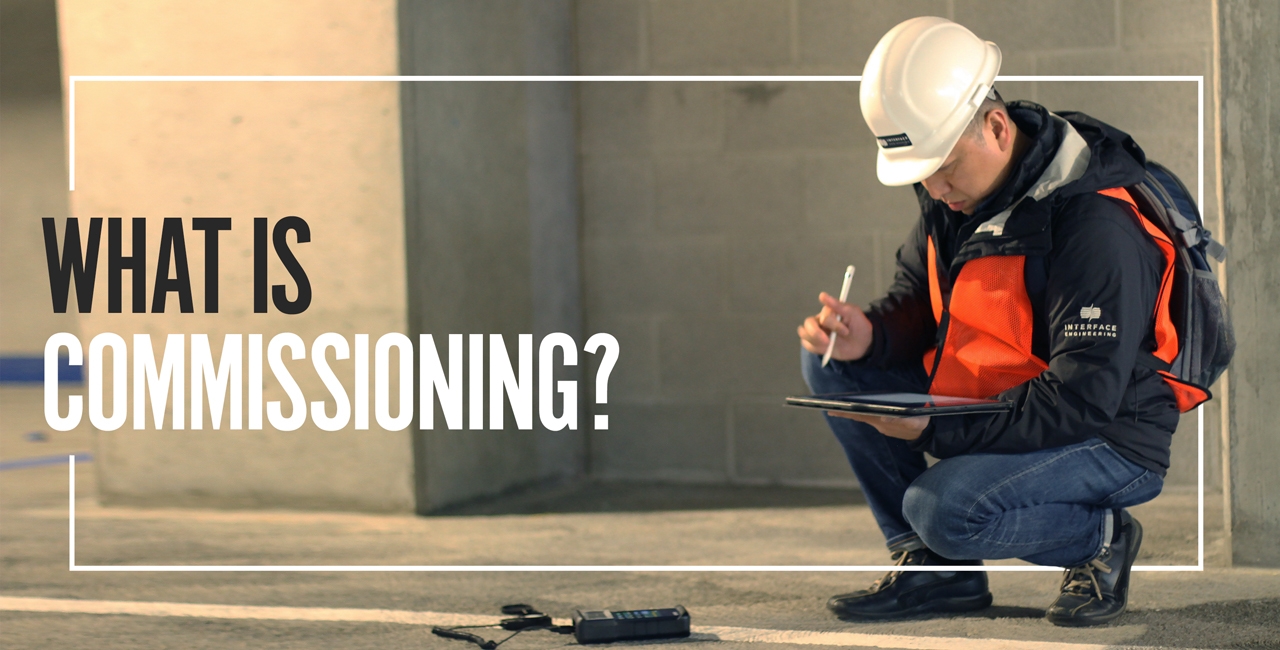
What is Commissioning?
Case Study
Apr 09, 2019
by Michael Flemming, PE, LEED AP, CxA, CEM
The word commissioning is used in many different ways when it comes to building construction. Many contractors will use commissioning interchangeably with equipment start-up as a way to describe turning on equipment and making it operational. While controls contractors use the word commissioning interchangeably with programming and making the equipment operate. However, true commissioning goes much further and starts long before either of these tasks begin. The true definition of commissioning is an ongoing process throughout the life of a project to ensure that a project is conceived, designed, installed and operated the way it was envisioned.
Interface Engineering will be developing a series of articles to go over commissioning and the true value that is provides to any building project far and above just meeting code or LEED requirements. The goal will be to educate developers, architects as well as all members of the building construction team to understand the commissioning process so that it’s true value can be added to projects and so that they can be completed smoother and with more positive results.
To begin, this article will provide a high-level introduction into what commissioning is and how it adds values to any project regardless of size, scope and complexity.
The Commissioning process starts at the onset of a project with the creation of the Owner’s Project Requirement (OPR). This valuable, but commonly overlooked, document is the start of any good project. Although the creation of the document is not the responsibility of the Commissioning Provider (CxP), their experience and expertise make the creation of this document much easier. A strong OPR is the owner’s opportunity to document their hopes and dreams for a project and to differentiate the “must haves” versus the “nice to haves”. Once created, the CxP will utilize the OPR to ensure that the design and construction team meets the project requirements and that the project that is ultimately delivered is the building that the owner wanted.
The CxP works with the design team by reviewing their Basis of Design and design documents throughout the design phase to ensure that project goals are being met. By concurrently reviewing drawings for multiple disciplines the CxP ensures that the project’s requirements are met in the design, value engineering and construction phases of the project. The same CxP will then remain on the team during the construction phase and work with the construction team to ensure that as the project evolves, the ultimate goals defined in the OPR continue to be met, if not exceeded. This is done by performing the following:
- Reviewing submittals.
- Creating checklists, also known as Pre-Functional Tests.
- Creating functional performance tests.
- Reviewing the work of the construction team.
These are all necessary parts of the process to ensure that equipment performs exactly as it was intended.
Finally, the CxP ensures that each step of the process is documented for the protection of the contractor, designers and owners in order to deliver a project that works from the beginning and can be operated by the building’s facilities staff.
Obviously, commissioning is no small task and can have wide ranging effects on a project, so are you putting enough thought into selecting your CxP?